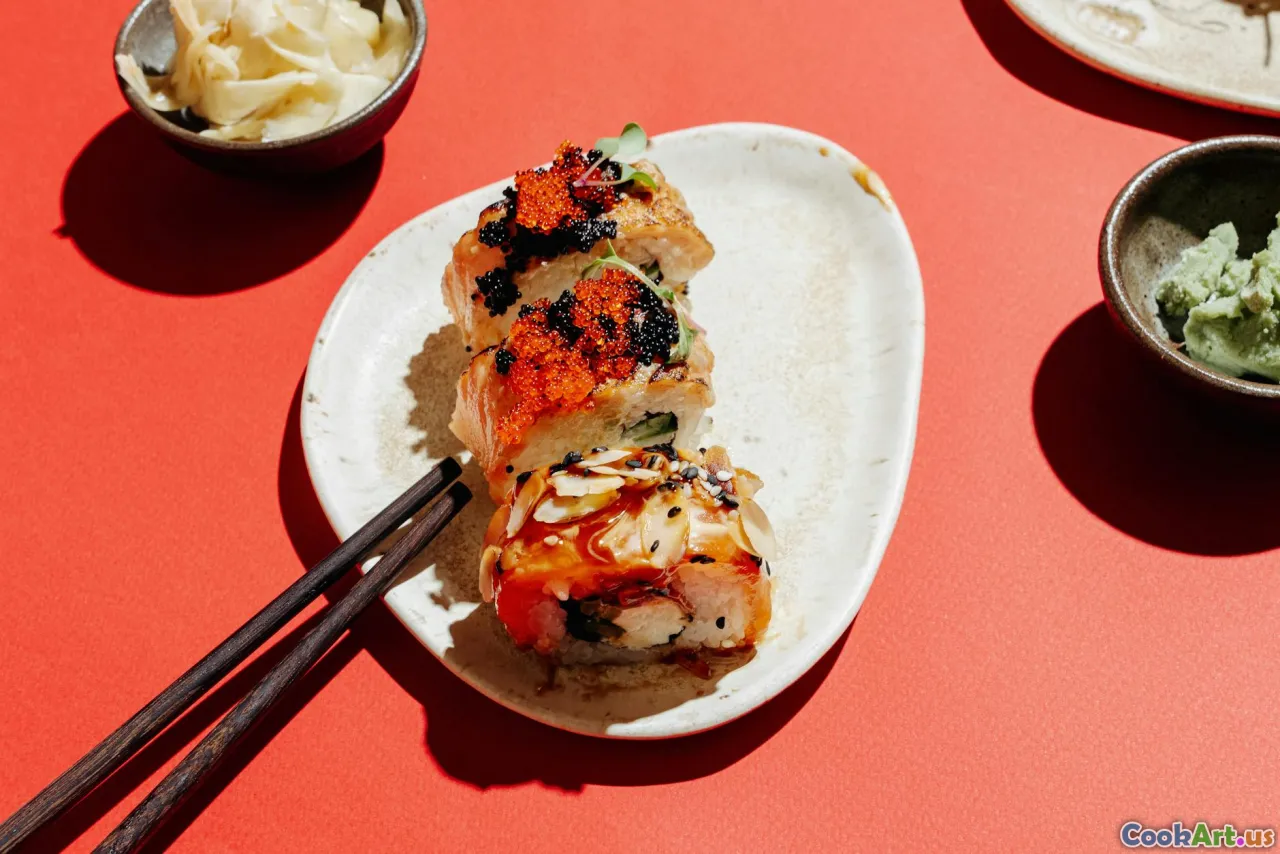Beyond Borders: Innovative Flavors
8 min read Explore the vibrant world of fusion food, where borders blur and flavors collide to create exciting, innovative culinary experiences that delight the senses. April 20, 2025 19:00
Beyond Borders: Innovative Flavors
Imagine walking into a bustling street market where the air is thick with the aroma of spices, grilled meats, and unfamiliar yet tantalizing scents. You’re transported into a universe where culinary boundaries dissolve, and flavors from disparate cultures meld into harmonious, unexpected combinations. This is the vibrant world of fusion food—a testament to human creativity, cultural exchange, and the universal language of taste.
The Origins of Fusion: From Ancient Crossroads to Modern Innovation
Fusion cuisine isn’t a modern invention; it’s a centuries-old narrative woven into the fabric of human history. Ancient trade routes like the Silk Road and the Spice Route served as culinary highways, transporting ingredients, cooking techniques, and culinary philosophies across continents. For example, the Persian kebab influenced Middle Eastern and Central Asian cuisines, while Indian spices found their way into Southeast Asian dishes, creating new flavor profiles.
In the 20th century, as global travel and migration increased, so did the culinary cross-pollination. Chefs and home cooks alike began experimenting with ingredients, techniques, and traditions from diverse cultures, driven by curiosity and the desire to create something uniquely their own. This evolution gave birth to what we now recognize as fusion cuisine.
The Art of Fusion: Balancing Tradition and Innovation
Creating successful fusion dishes requires a delicate dance—respect for traditional flavors and techniques must be balanced with inventive spirit. It’s not about tossing ingredients together haphazardly but about thoughtful pairing and understanding how different elements can complement each other.
Sensory Symphony: Taste, Smell, and Texture
Imagine biting into a Korean-Mexican taco—a soft corn tortilla cradles bulgogi, kimchi, and a drizzle of spicy gochujang mayo. The sweet, savory, spicy, and tangy flavors explode on your palate, while the aroma of grilled beef mingles with fermented vegetables, creating an olfactory tapestry that beckons you to take another bite.
Textures also play a critical role. The crunchiness of fresh kimchi contrasts beautifully with the tender, juicy beef, providing a multi-layered sensory experience. Visually, the vibrant reds, greens, and browns make the dish as appealing to the eyes as it is to the taste buds.
Cultural Respect and Authenticity
While innovation is key, respecting the roots of each cuisine ensures authenticity. A good fusion dish honors the traditional techniques and ingredients while reimagining them in a new context. For example, a sushi burrito combines Japanese ingredients with the portability and casual vibe of Mexican street food, creating a hybrid that pays homage to both cultures.
Iconic Examples of Fusion Flavors
Korean-Mexican Cuisine: A Modern Classic
Korean-inspired tacos have become a culinary phenomenon. The marriage of tender, marinated bulgogi with the familiar taco shell brings together the umami richness of Korean barbecue with the comfort of Mexican street food. Toppings like pickled radish, cilantro, and spicy gochujang sauce add layers of flavor and heat.
Japanese-Peruvian: Nikkei
Nikkei cuisine is a shining example of cultural blending. Introduced by Japanese immigrants in Peru, it combines the delicate umami of Japanese ingredients with Peruvian staples like aji peppers and potatoes. Dishes like Tiradito—a sashimi-style fish in a spicy citrus sauce—highlight this culinary synergy.
French-Vietnamese: Pho à la Provençale
Imagine a fragrant broth infused with herbs and spices, but with a French twist—perhaps a splash of white wine or a sprinkle of Gruyère cheese. Such innovations showcase how traditional techniques can be adapted to new contexts.
Personal Encounters and Culinary Adventures
My journey into fusion food began during a trip to Singapore, where I discovered Hainanese chicken rice served alongside a vibrant chili-lime sauce inspired by Thai flavors. The dish was a revelation—a perfect harmony of tender chicken, fragrant rice, and zesty, spicy accompaniments that awakened all my senses.
Later, experimenting in my own kitchen, I created a dish inspired by my travels: Spicy Thai-Italian Pasta—linguine tossed with coconut milk, Thai basil, and spicy chili flakes. The result was a creamy, fiery, aromatic dish that embodied my love for both cuisines.
The Future of Fusion: Creativity Without Borders
As the world becomes more interconnected, the possibilities for culinary innovation are endless. Chefs are pushing boundaries further, incorporating ingredients like Moroccan harissa into Scandinavian dishes or blending African spices with Mediterranean grains.
Sustainability and Local Flavor
Emerging trends also focus on sustainability—using locally sourced ingredients to create fusion dishes that support communities and reduce environmental impact. Imagine a West African-inspired quinoa salad with seasonal vegetables, celebrating global flavors while honoring local produce.
Tech and Fusion: Virtual Kitchens and Food Tech
Technology enables chefs to experiment with flavors in ways never before possible. Molecular gastronomy, 3D food printing, and virtual recipe sharing foster a global culinary dialogue that continually expands the horizon of fusion cuisine.
Embracing the Spirit of Innovation
Ultimately, beyond borders, the world of innovative flavors invites us to explore, experiment, and celebrate the rich tapestry of human culture through food. Whether you’re a home cook or a professional chef, the key is curiosity—an openness to new experiences and a respect for tradition.
So next time you dine or cook, think of the endless possibilities that lie in blending diverse culinary worlds. After all, the most exciting flavors are often found where borders meet.
In conclusion, fusion cuisine is much more than a trend; it’s a reflection of our interconnected world—an edible testament to our shared humanity and creative spirit. It reminds us that food is not just sustenance but a powerful medium for storytelling, cultural exchange, and innovation. Embrace the adventure, and let your palate be the guide to a universe of beyond borders flavors.









